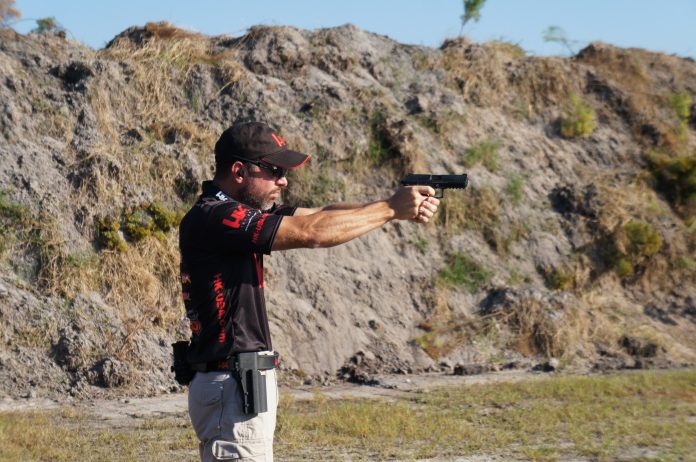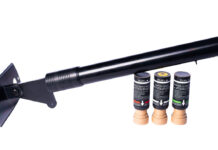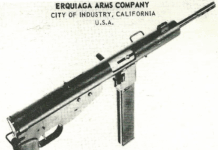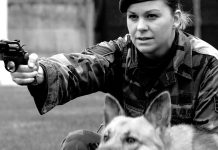
The other day I talked about the importance of goal setting when measuring performance, and I approached the subject entirely from a competition shooting standpoint. Now while we’re big advocates of competition shooting here, I also accept that there are some shooters who simply aren’t interested in matches, but still want to get better. For the ccw-focused shooter, what are good ways to set goals and measure performance?
Again, we want to focus on an objective standard, and for that I like to use the FAST Test, created by my late friend Todd Green. To set this drill up, all you need is a 3×5 index card and an 8 inch circle. You can use an index card and a paper plate, or tape an index card to the head box of an IDPA target. You could also download this target and print it on an 8.5×14 sheet of paper. Anyway, back to the post – the FAST consists of six shots, all fired from concealment. Here’s the course of fire:
- Start with two rounds in the gun, draw and fire two shots to the 3×5 card
- slidelock reload, fire four more shots at the 8 inch circle.
Anything under 7 seconds is considered and Advanced score, and under 5 seconds is pretty awesome. The current official record is held by some guy named Sevigny, who I hear is pretty good at shooting.
Now that you’ve been thoroughly demoralized by watching Dave smoke that drill, we can talk about goal setting for it. Let’s say your goal is to get consistent times under 6.00, which is a pretty reasonable goal for an average shooter. Let’s break that down: you’ll need to draw and get both head shots under 2.50, get your reload under 2.50, and then have three 0.30 splits for the remaining shots. That would put you at 5.90 for the drill.
I don’t recommend practicing the actual FAST too often though – when talking to Todd about the drill, he pointed out that it’s better to practice the individual parts of the drill, and then at the beginning and the end of your practice sessions try and put it all together. Here’s what a good practice session would look like that for that.
- Two shots to a 3×5 card, no par to set a baseline 10 reps
- Repeat, trying to get your baseline every time, 10 reps
- Subtract 0.25 from your baseline, 10 reps
- Subtract another 0.25 from your previous time, 10 reps
- Go back to your baseline/goal time for 10 more reps
After that, I’d switch to 1-reload-4 drills on the head/body. https://www.youtube.com/embed/-MQakpnb55M
For the 1r4 drills, you’ll start with the gun out of the holster, aimed in on the 3×5 card. At the beep, fire one shot to slidelock, reload and fire four to the body. This drill gives you the chance to work on your slidelock reload and trigger control with the four rounds to the body.
- 5 reps no par time (25 rounds)
- 5 reps at baseline time (25 rounds)
- 5 reps at 0.50 less than baseline (25 rounds)
- 5 reps back at baseline/goal time
The point with reduced par training is to push your speed to a point where you’re making mistakes, then slow it back down to make your baseline/goal time. Eventually, you want your baseline times to decrease to the faster times that you’re using to push yourself. So if your initial baseline for 1r4 is 3.70 seconds, you’ll want to get it down to 3.2, then down under 3, etc.
It’s how you get better. There are plenty of other excellent drills that you can use to evaluate your skills as well, I just happen to like the FAST because it’s simple to set up, and tests a fairly wide combination of relevant defensive shooting skills.



